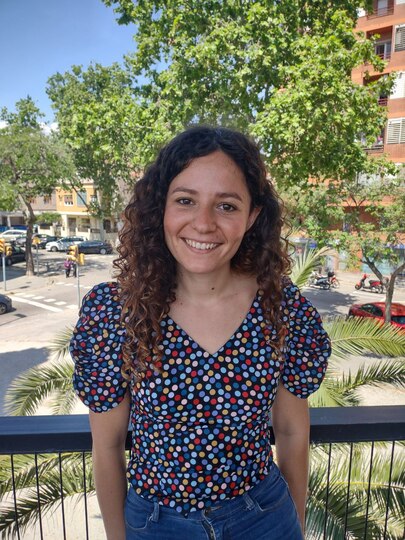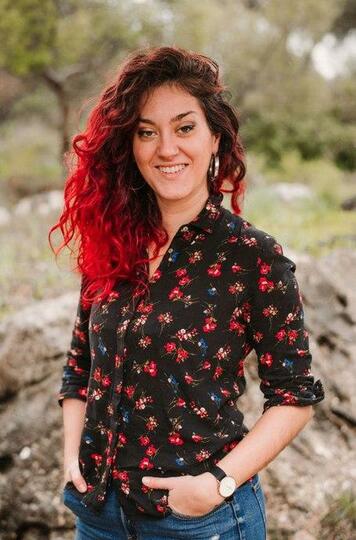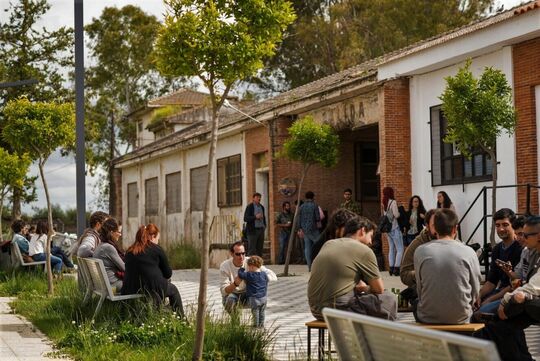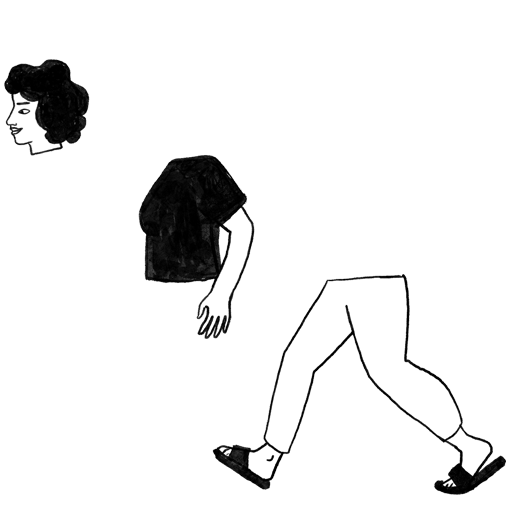Interviews
Ines Cheniour It is key to find the right balance between the rules and giving the flexibility to play around and have fun
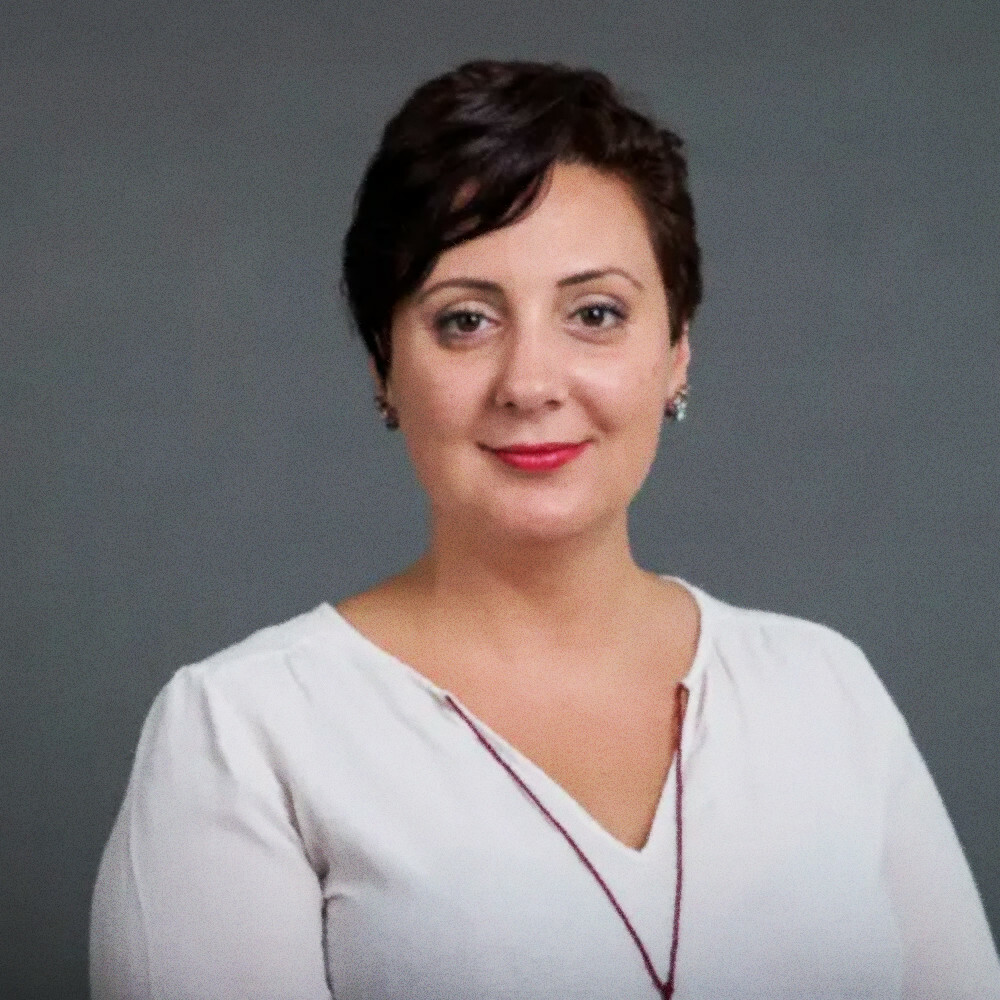
Ines Cheniour is a Tunisian consultant in design thinking and communication strategy. She is the founder of COMMITT consulting and has worked with NGOs like British Council, UNDP, GIZ and many other local social initiatives. Using design thinking tools, Ines integrates the human element in all the projects she undertakes. Her main work focuses on helping youth and women to develop their self leadership and social leadership skills.
Jasmine Revolution and Design Thinking. Tell us a bit about it and how it influenced your career.
After living in Canada for 10 years and studying graphic design at Laval University in Quebec, I travelled back to Tunisia in 2013, exactly 2 years after the revolution. The whole country was required to be built again from scratch and it seemed like young people were the ones everyone expected to do this. But how? No one knew where to start.
I noticed that the design thinking methodology, about which I had learned while living in Canada, could be useful to help youth organise the rebuilding process of the country. At the same time I also read a lot about how to build resilience, how to engage communities, and how to use design thinking for social innovation. During that year, I observed that youth had a lot of energy, but was not following a specific methodology for innovation. Therefore, I started from there, training young people with design thinking methodologies, which I used to call social leadership, as people did not know what design thinking was. At the beginning, I did it for free, to prototipe my method, but then the UNDP somehow heard about my training and contacted me to find a way to work together. Anyhow, I had promised myself not to take any decision before september 2014.
I started working on my own company, Committ, in 2015.
But why design thinking, what is design thinking for you and what motivates you about this methodology/approach?
I like it as I think it is intuitive. It is first of all a mindset, before being a methodology, an approach or a tool. It is the way you see life, you approach things that happen. Empathy for me is a part of the human being, we are all empathic and if we are not we should all develop our empathy a bit more, as it can really help us to understand how to listen to people. It is very important to be creative and find new ways to resolve things, through prototyping and testing this interaction. Interaction is at the basis of life, nobody learned how to walk before trying to stand up and fall down.
I find design thinking very organic and intuitive, it is not something that I had to add to my way of thinking and living, it was already my mindset, something that I already used in an uncontrolled intuitive way. The day I discovered it I said “Oh my God this is me!”. I just had to systematize in my mind a little bit something that I kind of had naturally interiorized.
Another thing I like about design thinking is that it means dealing with ambiguity. I am a designer in my mindset, but I always say that I am a designer trying to understand processes more than designing new ones. Also, I like the fact that design thinking means personal development, working on ourselves first, more than our company or association.
If you don’t use creativity, active listening etc. in your daily life, probably the first training on design thinking for you will be much more an opportunity for personal development and self growth, before being a training on a new methodology for innovation.
So this is basically what I like about it, its intuitiveness; I think that when we are in a relationship, or when we meet new people, or we are in a new environment, we all practice design thinking without knowing it.
Let’s talk about empathy. In our field, in our profession, empathy has become a hype, as if with empathy you could resolve all problems, but… is it really enough? Especially when we work with social impact and communities, with living experiences that are complex, intersected by injustice for example? What are its limits and potentials?
First of all, there are different kinds of empathy. When people hear about empathy they always think about emotional empathy, but with design thinking we refer more to cognitive empathy. We refer to trying to understand why people think or act in a certain way, accepting their decision and trying to understand the reasons behind. When I train, many people tell me “Yes but empathy made my life a hell because I am always empathic with everyone but this did not lead me anywhere”. Yes, I say, it is true, it can really be heavy at certain points. But with design thinking, even if we feel how people feel, this is not the kind of empathy we use, we try to understand why people act and react in a certain way, what is the root problem behind their decision.
Secondly, an example from working with social innovation. With GIZ, we had a project in Tunisia in which we were trying to understand why decentralization was not working here. In such a contest as ours, you cannot use empathy. Politicians are like “No, we don’t want to give part of our power to the local communities, we like centralization”.
For this kind of challenge, for example, we understood that we needed to combine design thinking methodologies with systemic processes, which have a huge influence on the people who live inside the country. For example, I travelled for a long time in the first year I was back to Tunisia. First because I wanted to be sure that I really wanted to live in Tunisia. So I travelled to many other countries, Spain, France, Algeria, etc., and every time I asked myself “Do I want to live here?” and the answer was always no.
But anyhow, I kept on wondering why people were happy there, why they respected the rules, why Tunisian people well behave outside Tunisia and not when they leave here? Why do they change their behaviour? I realized that what changed was the environment; when the environment changes, people’s behaviour changes. And this is something very important to take into consideration, so this is why I think that at a certain point if we do not combine empathy and design thinking with systemic thinking we cannot achieve anything.
Then, your last question touched the subject of co-creation vs. empathy. Co-creation is really cool when people are prepared, you cannot just bring people who have no previous training nor basis on teamwork, ideation or team building in a room and ask them to bring about solutions. There is a lot of preparation beforehand. You can prepare them, meet them before, understand where they are and then adapt your training accordingly. You give them some elements, and then you can ask them to start co-creating. I observed that most of the time we want to do a shortcut, but it does not work, co-creation has to be prepared, because often people are not even used to basic things such as listening to each other while they speak.
For example, when I worked with GIZ and the government, the first time none of the participants was able to speak without interrupting the others. I spent like three sessions just helping them learn how to work together, not interrupting each other and summarizing their ideas. Then we were able to work; and to achieve that, I had to make them sing, play, doing yoga together, before they were able to start co-creating. This is something that people often do not think about, they want to achieve very high results immediately, investing very little and without taking into consideration adopting different perspectives, like theatre, music, dance.
Remember, co-creation works in the long term. Before we have to start the change with people, with their mindset. The working environment also plays a big role. Co-creation works easier and better when you take people out in nature to spend 3 or 4 days together in a hostel. But when you are in a meeting room where they used to work…mmh, it’s harder. In my experience, to make co-creation work you have to create a contest for it, to put people in the right mindset, especially for those who are not used to working together and are not trained in co-creation.
Wow, so many thoughts! So, it sounds like you see yourself a lot as a facilitator rather than an expert necessarily.
Oh, yeah, definitely!
So this is one of the principles of Design Justice for example: the designer as a facilitator rather than an expert. Of course, you are an expert in your discipline, but the way you approach communities is by finding the way to facilitate their own knowledge, their own understanding.
And another question, you mentioned working with different communities and I was wondering if you adapt your way of working according to your target audience, especially with youth and less structured environments than ministerial or governmental world…what about participatory processes with communities and territories? Could you also touch on your specific national and local environment, for example as compared to Canada?
(Ines laughs) Yes, there are big differences between Canada and Tunisia, of course, but also, I did not do the same social work I do here in Tunisia when I was living in Canada so I cannot really compare. I can say that there are some basic concepts in Canadian education that we don’t have here in Tunisia, for example active listening, drawing to visualize information, learning to be short and effective. etc. So there are some basic competences for design thinking that “already exist” in Canada and in the USA and that here you have to build from scratch. And this is exactly what I have done when I first arrived here, I knew that the way design thinking existed, alyas referring and attached to the digital and virtual world, the way people talked about it, its specific terms, etc. could not work here. It had to be cut in small pieces and we had to add other pieces to make it easier to transfer and be digestive for Tunisians.
About adapting my methodologies according to different communities, of course working with youth is completely different from working with adults. Working in the south is completely different from working in the city, in Tunis. Working with Libyan people is different from working with Tunisians. For example, I have once worked with 130 young people in Libya, from the North, the South and the West. So, the first two days are sense-making for me, I use this time to understand who the participants are and where they are. Indeed, many times I don’t have any information about the target group, and every group is different. Then, I take a break and my team and I start designing the programme two hours by two hours. Everytime we achieved a certain goal, we changed and adapted our methodologies, like an adaptation in real time. We may approach some communities in a more challenging way, some in a more empowering way.
For example, when you train in a hotel, with food and all comforts, is different from when you work in a small CSOs room, the whole environment changes. So, some adaptations I do intuitively, others consciously. The question I always ask myself everytime I observe the group is where they are, what they are thinking, and where they would like to go.
You said that Tunisia was not ready for Design Thinking, and this leads me to think about our living experience. With Platoniq we worked to create the Mediterranean node, or better, the South European node (for now) of the Design Justice network. So Design Justice is a global network: how to bring the design oriented processes to our mediterranean society? Complicated, we are not a super structured and organised society, we are somewhat chaotic! So, is that us or is it just Design thinking that is not the right approach in this contest? Are there local approaches to co-creation? Traditions or existing practices that we should engage with?
I say that if you send an Italian to Canada or the USA, they will understand the process and start applying the methodologies very quickly. The problem is the environment in which we are working and living, not the in being Mediterranean, Italian or Tunisian. I asked myself this question a lot, so I really understand your concern. Many things I have done here, people have told me “Remember, you are not in Canada here, we are in Tunisia!”. Ok, but when I have been able to put the right contest and environment, I achieved the goal, so it doesn’t really matter if people are in Tunisia or in Canada: if you are able to put in place a contest in which people feel engaged, then the process starts. It means for example that the training room has to be very clean, even the table. If the room is chaotic, then the training is going to be chaotic. Everytime my team and I pay a lot of attention to the details, things go as we designed and people can follow the process without chaos. This is something I learned while attending training in the Netherlands. There, for example, they control the environment very rigorously and in a structured way, they pay attention to every detail and things that are not necessary do not need to be there. So from this experience I learned that every detail is important. Even the food, the kind of food, the way it is served. Sometimes I also change the way I sit. You have to put people in a structured environment in order to have a structured experience.
It is a lot of preparation indeed. This is why everytime that we have to give training, we go there two days earlier, to investigate the environment and prepare and adapt the best we can. Remember that is the mindset of people that we want to touch: if we put them in a fun environment, then the training will be fun, otherwise it won’t. This is something people often forget about when working with social innovation, the importance of the environment of the whole experience, not only the content. In Italy, just like in Iraq and Tunisia, for example, conviviality plays an extremely important role. In Tunisia and Iraq, we eat from a big pot and people serve each other, we don’t use plates. We serve breakfast first and then we start working, because when there is food, there is conviviality. We do not foresee fixed coffee breaks, but rather give access to coffee and fruit all along. Anytime you can take a break, go smoking a cigarette and come back. At a certain point there is a lot of freedom inside the structure. It is key to find the right balance between the rules and giving the flexibility to play around and have fun.
What about visual tools? I am assuming you work with canvas, but is there any kind of adaptation of what it works best to the local contest?
Yes, sometimes I invent tools depending on the goal and target groups. Sometimes I design new tools, I simplify one toll, add and remove parts. When the workshop is short I use maximum 1 or 2 canvas and I make sure that the link is easy to do. Sometimes we added a kind of sketchnoting training, adding half a day of training on visualization and sketchnoting trying to take the participants’ inner children to the room.
Basically I work in three languages, Arabic, French and English. and believe me it’s three cultures! For example I designed a tool because I realized that at the beginning you need to first collect all the possible inputs before using a specific tool. So, I found a way to adapt and simplify tools which work in English, with French so and so, but with Arabic no. So in Arabic I use only 4 questions that lead to 1 result. Every target group brings its own challenges, so everytime I try to make my processes more light and easy for people, two-three tools a day.

